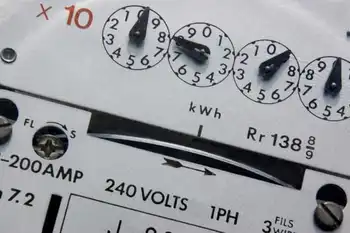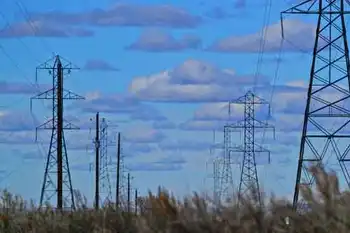Substorm study could help protect grids
By Globe and Mail
Protective Relay Training - Basic
Our customized live online or in‑person group training can be delivered to your staff at your location.

- Live Online
- 12 hours Instructor-led
- Group Training Available
For decades, researchers have puzzled over what causes the aurora borealis to sometimes dance so wildly and race around the top of the globe. Now, an international team of scientists say they have solved the mystery.
"We have found definitive evidence of what powers the most spectacular displays of the Northern Lights," says Ian Mann, a physicist at the University of Alberta in Edmonton and one of the authors of a paper published in a recent edition of the journal Science.
In it, they describe how magnetic disturbances known as substorms energized the Northern Lights on Feb. 26. Their work may one day help protect satellites, power grids and astronauts in space from the damaging radiation that can be released in substorms.
Dr. Mann and his colleagues made their discovery with the help of five satellites and 16 ground-based observatories in Canada and four in Alaska.
Northern Lights occur when charged particles from the sun collide with gases in the upper atmosphere, but scientists who study the phenomenon weren't sure exactly why the lights sometimes flare and become so dynamic. While they knew that substorms caused these strange and beautiful celestial shows, they didn't understand how substorms are triggered.
"What is it that causes this energy to be released?" Dr. Mann asks.
The particles that cause the aurora borealis stream from the sun in a constant flow known as the solar wind. The Earth's magnetic field largely deflects the solar wind around the planet, and only a small percentage of particles gets through.
"Think of a river flowing around a rock," says Jonathan Rae, a research associate at the University of Alberta and one of the co-authors of the paper. The protected space dominated by the Earth's magnetic field is called the magnetosphere, and it has a long tail, or wake, that streams away from the sun.
Researchers suspected that the substorms were triggered in this tail.
In Science, the team reports that the Feb. 26 substorm started when magnetic field lines reconnected far out in the tail, about a third of the distance from the moon. Magnetic energy was transformed into kinetic energy and heat, which caused the Northern Lights to flare.
Basically, two opposing magnetic fields get forced together, Dr. Mann says, and they have a lot of stored energy.
Substorms like this one aren't the result of changes in the solar wind, Dr. Rae says: "It is more about the critical amount of energy in the magnetosphere."
The five identical satellites were launched by the U.S. National Aeronautics and Space Administration on Feb. 17, 2007, so researchers could get a view of substorms from space.
Twenty observatories were built in the North to monitor the sky for bursts of Northern Lights activity. Each is equipped with a camera that every three seconds takes an image of the entire sky.
Substorms can occur every four hours or so, Dr. Rae says. But it took more than a year for the satellites in different orbits to line up to get a full picture of what was happening during one of them, and to see where it started.
The researchers are hoping to monitor more substorms, and the results will show whether all are triggered in the same way.
The work may make it possible to predict when substorms will hit, says Vassilis Angelopoulos, lead author of the Science paper and a researcher at the University of California in Los Angeles. Astronauts could go inside their spacecraft, and critical systems on satellites could be switched off.
Canada's contribution to the project is $1.4-million. NASA is spending $200-million (US) on the THEMIS mission, which stands for Time History of Events and Macroscale Interactions during Substorms.











